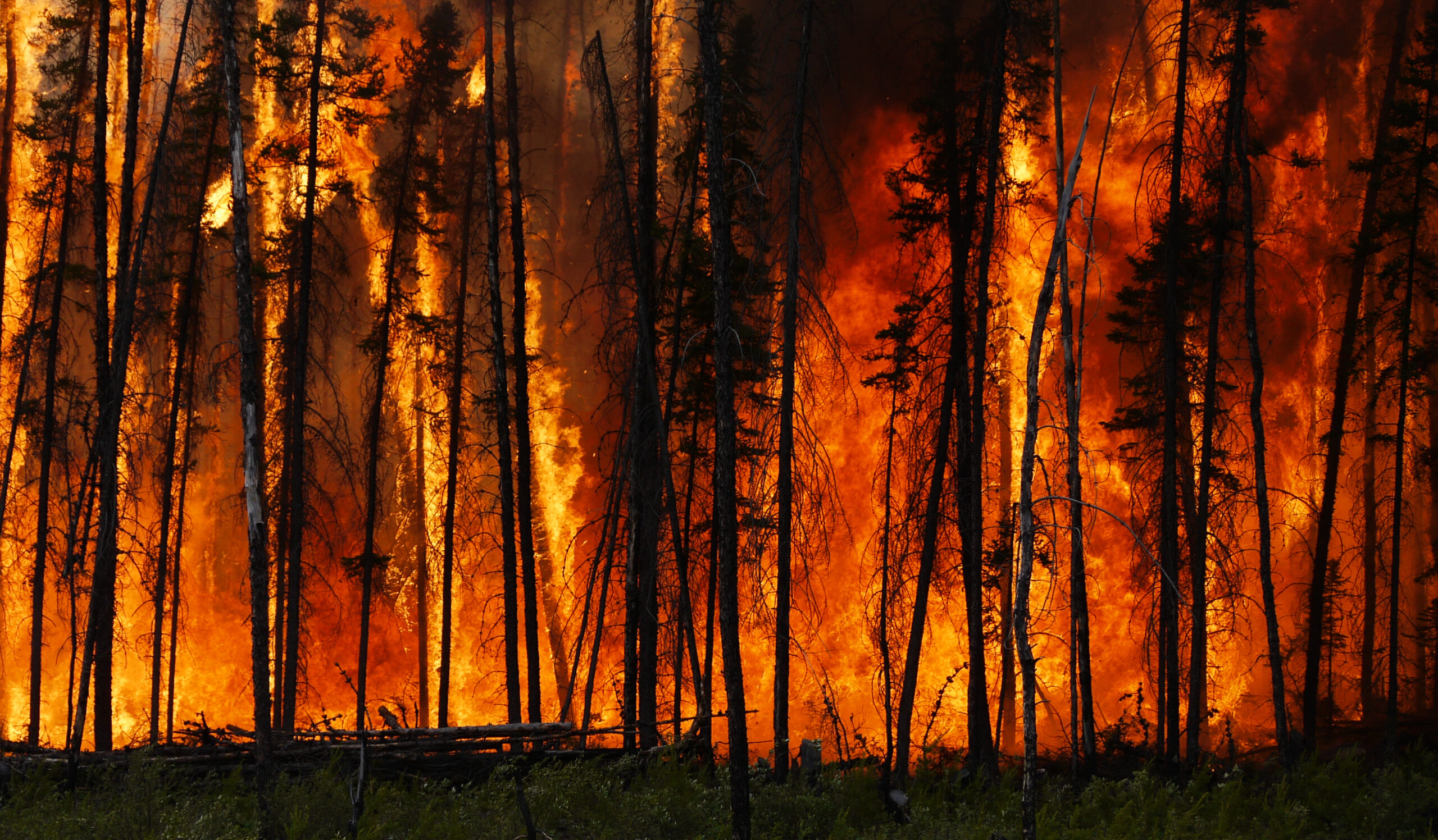Introduction
Canada’s breathtaking landscapes and vast forests paint a picturesque canvas, but within this natural beauty lies an unpredictable and formidable force – wildfires. These ferocious infernos, a product of both natural and human factors, have the power to unleash devastation on a massive scale, threatening communities, wildlife, and the environment. In this article, we embark on a journey into the heart of the Canadian wildfire phenomenon, exploring their causes, impact, and the heroic efforts made to combat and mitigate their destructive power.
Understanding Wildfires and Their Causes
Wildfires, a natural phenomenon in Canada’s forested regions, often ignite from a combination of nature’s wrath and human carelessness. Lightning strikes, droughts, and human activities such as campfires or discarded cigarettes can spark these fierce infernos. When conditions align, the forest floor becomes a bed of kindling, awaiting the spark that sets it ablaze.
The Unpredictable Nature of Wildfires
Once unleashed, wildfires become living entities, dancing with the wind, and defying human control. Wind speed, humidity levels, and fuel availability dictate their path and intensity, making them a formidable force to combat. Firefighters risk their lives to protect communities and natural resources, but Mother Nature often remains the master of this fiery symphony.
Impact on Communities and Wildlife
Wildfires threaten communities with relentless force, endangering lives and properties. Residents in fire-prone areas must prepare for the worst, embracing evacuation plans and vigilance. The aftermath leaves landscapes scarred, and the loss of habitat and food sources disrupts the delicate balance of wildlife ecosystems, forcing animals to seek refuge elsewhere.
Environmental Consequences and Climate Change
The smoke-laden air engulfs regions affected by wildfires, creating a smog-filled atmosphere that poses health risks to humans and animals alike. The relentless release of greenhouse gases during these events intensifies climate change, creating a dangerous feedback loop that amplifies future fire risks. Addressing wildfires is not just about battling flames but also about safeguarding the planet’s delicate climate balance.
Fighting the Blaze: The Heroic Firefighters
Amidst the fiery chaos, heroes emerge. Firefighters, the brave souls who form the frontline of defense, face the inferno head-on. Armed with courage, skill, and determination, these valiant individuals battle through smoke and scorching heat to protect lives and properties. Their dedication and resilience in the face of nature’s fury are awe-inspiring.
Aerial Suppression: Water Bombers at Work
Aerial firefighting adds another dimension to the battle against wildfires. Water bombers soar through smoke-choked skies, descending upon the flames like avenging angels. Laden with vast quantities of water or fire retardant, these aircraft target the heart of the fire, slowing its relentless advance. Their maneuvers are a symphony of precision and calculated risk, designed to tip the balance in humanity’s favor.
Community Preparedness and Evacuations
Living in fire-prone regions demands vigilance and preparedness. Communities must plan for the worst, devising evacuation strategies and communication systems. When the call to evacuate echoes through the valley, the community must move as one, seeking safety and solace amidst uncertainty.
The Aftermath: Rebuilding and Recovery
When the flames finally subside, the scars left behind are both visible and emotional. The aftermath of a wildfire requires collective healing and resilience. Communities must rally together, offering support and compassion to those affected. Beyond the physical reconstruction lies the emotional rebuilding, where scars run deep and restoration takes time.
Preserving Forests and Preventing Future Fires
Preserving Canada’s magnificent forests is an essential aspect of wildfire prevention. Sustainable forest management practices help create resilient landscapes, less susceptible to rapid fire spread. Controlled burns, another valuable tool, clear fuel loads, reducing the severity of future wildfires.
Conclusion
The untamed fury of Canadian wildfires serves as a stark reminder of nature’s power and our responsibility to protect the delicate balance of our environment. From the bravery of firefighters to the resilience of communities, addressing wildfires requires collective action and unwavering dedication.
As we stand amidst the burning fury, let us remember that the future lies in our hands. By safeguarding our forests, embracing preparedness, and working in harmony with nature, we can strive for a world where wildfires become a tale of the past.
FAQs
-
What causes wildfires in Canada? Wildfires are often ignited by a combination of natural factors like lightning strikes and human activities such as campfires.
-
How do wildfires impact communities? Wildfires pose an immediate threat to nearby communities, endangering lives and properties, prompting urgent evacuations.
-
What are the environmental consequences of wildfires? Wildfires release smoke and greenhouse gases, compromising air quality and contributing to climate change.
-
What is the role of firefighters in battling wildfires? Firefighters exhibit bravery and skill in confronting the blaze, safeguarding communities and natural resources.
-
What measures can prevent future wildfires? Sustainable forest management and controlled burns can reduce fuel loads, limiting the severity of potential wildfires.
- Read more news blogs here.

